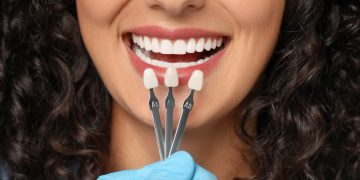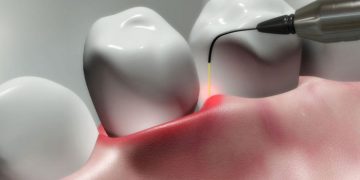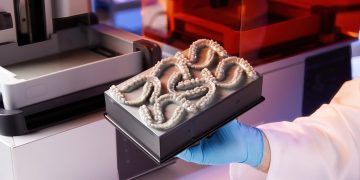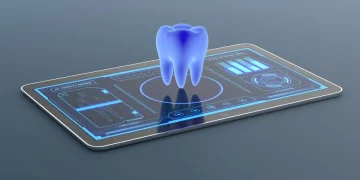Laser technology has made significant strides in various fields of medicine, and dentistry is no exception. Dental lasers are now widely used in a variety of procedures, ranging from soft tissue treatments to cavity preparations and teeth whitening. Laser dentistry offers a less invasive, more precise approach to treating a variety of dental issues. This article will explore the advantages of laser treatment in dentistry and whether it is suitable for all patients.
What is Laser Dentistry?
Laser dentistry refers to the use of lasers (light amplification by stimulated emission of radiation) to treat a wide array of dental conditions. Lasers are used to remove or reshape tissue, treat tooth decay, and perform a variety of other dental procedures. There are different types of lasers used in dentistry, and they can be classified as hard-tissue lasers (used on teeth and bone) and soft-tissue lasers (used on gums and other soft tissues). Each type of laser is designed for specific treatments, making them versatile tools in modern dental care.
Advantages of Laser Treatment in Dentistry
Laser dentistry offers numerous benefits over traditional methods, especially when it comes to precision, patient comfort, and recovery time. Here are some of the key advantages of using lasers in dental treatments:
1. Minimal Pain and Discomfort
One of the most significant benefits of laser treatment is that it can significantly reduce pain and discomfort during dental procedures. Traditional methods often involve drills or scalpels, which can cause vibrations, pressure, and discomfort. Laser technology, on the other hand, is typically less invasive and can often be performed without the need for anesthesia. In some cases, lasers are so precise that they can target the specific area of the tooth or gum without affecting surrounding tissues, further reducing discomfort.
For procedures like cavity removal, soft tissue surgeries (such as gum reshaping), and teeth whitening, lasers cause less pain, and many patients report feeling little to no discomfort during and after the procedure.
2. Faster Healing and Recovery
Because laser treatment is more precise and less invasive than traditional methods, it typically leads to faster healing and shorter recovery times. For example, when performing gum surgery, a dental laser can seal blood vessels and nerve endings as it works, which reduces bleeding and minimizes post-procedure swelling. This makes the recovery process much smoother and faster.
Patients often experience less downtime after laser treatments, and they are able to return to their daily activities more quickly than they would after traditional dental surgery.
3. Reduced Risk of Infection
Laser treatments can help reduce the risk of infection during and after procedures. The heat from the laser sterilizes the treatment area as it works, making it less likely that harmful bacteria will enter the body. This is especially important when performing surgeries in the mouth, as the mouth contains many bacteria that can lead to infections.
For soft tissue procedures, such as gum reshaping or treatment for periodontal disease, lasers minimize the amount of bleeding and help sterilize the area, leading to a reduced chance of infection. This makes laser treatment a more hygienic option for many patients.
4. Precision and Accuracy
Dental lasers offer exceptional precision, especially for procedures that require a high degree of accuracy. For example, when using lasers for cavity preparation, the laser can target and remove only the decayed portion of the tooth without damaging the surrounding healthy tooth structure. This allows for a more conservative approach, preserving as much of the natural tooth as possible.
For soft tissue procedures, lasers allow the dentist to contour and reshape the gums with extreme precision, ensuring optimal outcomes and minimal discomfort.
5. Less Need for Anesthesia
In many cases, laser treatments can be performed without the need for anesthesia. This is particularly true for soft tissue procedures such as gum contouring or frenectomy (removal of excess tissue in the mouth). Since lasers cause less pain and discomfort than traditional tools, many patients can undergo treatments without the need for local anesthesia or sedation.
This benefit is especially important for patients who experience dental anxiety or have a fear of needles. By avoiding the need for injections, laser treatments make dental visits more comfortable and less stressful.
6. Versatility of Use
Laser technology is incredibly versatile and can be used to treat a wide range of dental issues. Some of the most common applications of dental lasers include:
- Cavity removal: Lasers can be used to remove decayed tooth material and prepare the tooth for a filling.
- Gum disease treatment: Lasers can be used to treat gum disease by removing infected tissue and promoting healthy tissue growth.
- Teeth whitening: Dental lasers can activate whitening agents and speed up the teeth-whitening process.
- Soft tissue surgeries: Lasers are ideal for procedures such as removing excess gum tissue, treating lesions, or correcting frenulum attachment problems.
- Frenectomy: A laser is commonly used to release the frenulum in cases where it restricts lip or tongue movement.
With such a wide range of uses, dental lasers are becoming essential tools in modern dentistry, improving the precision and effectiveness of treatments across the board.

Is Laser Dentistry Suitable for All Patients?
While laser treatment offers many advantages, it is not always the best option for every patient or every situation. The suitability of laser treatment depends on several factors, including the type of dental issue being treated, the patient’s overall health, and the specific type of laser technology being used. Below are some considerations for determining whether laser dentistry is appropriate:
1. Type of Dental Procedure
Laser treatment is not suitable for all dental procedures. While lasers are highly effective for soft tissue procedures, such as gum reshaping or frenectomy, they may not be the best choice for certain hard-tissue treatments, such as deep cavity preparation or large tooth restorations. For some deep cavities or complex tooth repairs, traditional methods like drills may still be necessary.
Additionally, laser treatment may not be appropriate for very extensive dental work, such as when a significant amount of tooth structure needs to be removed. In such cases, a combination of laser treatment and traditional techniques may be used.
2. Health Conditions and Medical History
While laser dentistry is generally safe, it may not be appropriate for patients with certain health conditions. For instance, patients with certain heart conditions or those who have a history of excessive bleeding may not be candidates for laser treatments. Individuals with compromised immune systems or other medical issues should consult with their dentist and physician before undergoing laser treatment.
Some laser treatments may also require special precautions for patients who are pregnant, so it’s essential to discuss any health concerns with the dentist beforehand.
3. Age and Sensitivity
Young children or patients with extreme dental anxiety may sometimes require additional sedation or a more traditional approach to treatment. For example, while lasers are generally effective for minor procedures, children or patients who are particularly sensitive may not be able to tolerate the procedure as well as adults. In such cases, the dentist may recommend other options, such as sedation or the use of local anesthesia.
4. Type of Laser Technology
Different types of lasers are used for different dental procedures, and the choice of laser may affect the treatment’s effectiveness. Some lasers are more effective for soft tissue procedures, while others are better suited for hard tissue (teeth) treatments. Additionally, some lasers may not be available in every dental practice. It’s essential for patients to discuss with their dentist whether their specific dental issue is best treated with laser technology and which type of laser would be used.
Conclusion
Laser dentistry offers a variety of advantages, including less pain, faster healing times, reduced risk of infection, and improved precision. For many dental procedures, lasers provide a more comfortable and effective treatment option compared to traditional methods. From cavity preparation to gum reshaping, laser technology has the potential to transform dental care and improve patient experiences.
However, laser treatment is not always suitable for every patient or every dental issue. Factors such as the type of procedure, the patient’s medical history, and the availability of specific laser technologies must be considered before proceeding with laser treatment. It’s important for patients to consult with their dentist to determine if laser dentistry is the best option for their specific needs.
For many patients, laser treatment can significantly improve their dental experience, making visits more comfortable, efficient, and less invasive. As technology continues to evolve, the potential applications of lasers in dentistry will likely continue to expand, offering even more benefits to patients and practitioners alike.













































Discussion about this post